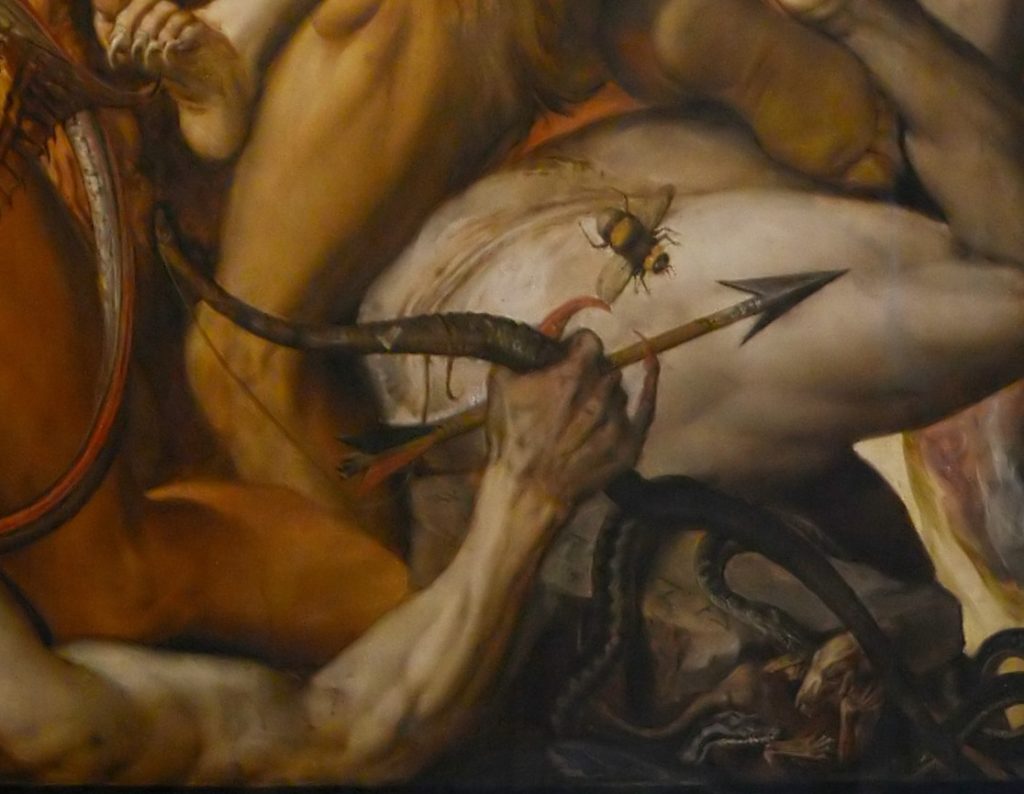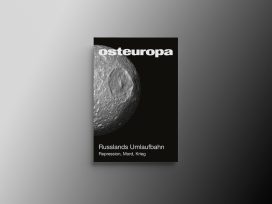
'It’s important to be open'
A Knowledgeable Youth podcast
Remaining in a new country or returning home? The Knowledgeable Youth podcast delves into the complex decision-making refugees face when migrating, together with researcher Olena Yermakova.
The difference between knowing from distance that war is being waged and living that reality couldn’t be more extreme. But can awareness of multiple repercussions turn protective disassociation from violence into active solidarity? ‘The Most Documented War’ symposium in Lviv, Ukraine, provides valuable pointers regarding engagement and responsibility.
The bouquets are so fresh and abundant in Lviv’s Field of Mars that bees are foraging cut cornflower blooms. Walking the stretch of this improvised wartime burial site – an extension of the carpark near the inner-city Lychakiv Cemetery – I observe numerous mourners tending their loved ones’ graves amongst all the commemorative flags. Their concentrated activity creates individualized plots: framed portraits of soldiers often enthusiastically posed, soft toys for missing parents, potted chrysanthemums mulched to last, well-rooted sunflowers having already reached full height; the physical remains of each person who died fighting Russian troops occupied with mementos, a devoted counterweight to their absence.
Despite the graveyard’s public location, I feel my fleeting presence as an invasion of privacy. Unlike in the neighbouring late-eighteenth-century cemetery-cum-museum, where I am one of many visitors to its tiered layers of historical perspective, here my presence as an outsider, an onlooker to recent loss, feels voyeuristic. Even if I’m documenting only what seems considerate, mourners don’t feel the need to take photos at this living memorial. So why am I? Why am I here?
I have a valid, professional reason for being in Ukraine: I’ve come over for the first time to attend the second symposium on the most documented war organized by Documenting Ukraine, Institute of Human Sciences (IWM), Vienna, a long-standing Eurozine collaborator, and the Lviv Centre for Urban History. It’s my job to cover Ukraine in European Dialogue, the focal point established in 2014 that has taken on even more significance since 2022. But my decision to visit was based on more than a sense of duty and dedication to the subject.
Yes, I wanted to attend the two days of panel discussions and one day of workshops to get a better insight into how organizations, both national and foreign, are developing their evidence-building capabilities. Yes, I wanted to support the initiative that was being launched: the Institute for Documentation and Exchange (INDEX), collectivizing the work of war documentation, initially from Lviv. Yes, I wanted to spend quality time with the colleagues I have worked with on pertinent texts, often at distance. And, yes, I wanted to meet writers who will hopefully become future Eurozine collaborators, especially those who are unable to leave Ukraine.
But, more than anything, I wanted to address the disjuncture between bordering yet parallel existences: namely, the secure way of life that I experience in the EU compared with everyday conflict in Ukraine.

Fall of the Rebel Angels, Frans Floris, 1554, Antwerp. Image via Wikimedia Commons
Europe is at war. But not so you’d notice by the way everything ticks along beyond Ukraine’s westerly borders. Am I here to make real what can seem abstract?
Turning what often seems intangible at distance more concrete at closer quarters did take effect by crossing the Polish border but was nonetheless mitigated.
War is evident in Lviv, even though it is one of the country’s largely unscathed westerly urban centres far from frontline combat. But only because there are clear signs of how daily life adapts to disruption: the electricity going down periodically during the symposium held in a basement for security reasons, halting proceedings until the backup kicked in; petrol fumes from many other generators littering shop-lined pavements; a siren going off in the middle of the night warning of a potential air raid; a young woman in khaki driving the Uber away from the Field of Mars.
Lviv, with its ornate albeit tired architecture where oligarchs and foreign investors haven’t yet moved in, otherwise resembles sister European cities built on past Austro-Hungarian expansion. Its vibrant cultural scene surpasses that of other similar-sized cities. And its cosmopolitan population – from those just about making ends meet to others outwardly comfortable – live a recognizable urban hustle and bustle.
Informal conversations with symposium participants reveal that the dichotomy between the awareness of ongoing war further east and a relatively safe life in Lviv coexists here too; not knowing how to reconcile different realities in times of war would seem to be a shared experience. But examples of finding the right approach to bridge the gap are overtly different for Ukrainians trying to reach out to their relatives who have served and survived. Waiting is tolerable, however, when, with relief, you know that the conversation can eventually take place.
The symposium covers a breadth of issues related to the complexities of archiving and documenting war. Topics include dealing with high emotions, acknowledging the physicality of places and bodies at war, developing good data collection practices, anticipating sustainable archiving processes, understanding legal constraints, and rethinking relationships between Western institutions and Ukraine.
During the final panel discussion, speakers are asked to describe how, in their view, solidarity has changed since 2022. For Angelina Kariakina, journalist and co-founder of Public Interest Journalism Lab, the first wave of responses that helped build national solidarity, both personal and institutional, have settled back into pre-emergency political divisions between various Ukrainian actors. And Volodymyr Sheiko, director general of the Ukrainian Institute, describes the needs for a more tangible unified approach: ‘Solidarity isn’t charity,’ he says, ‘it requires active participation.’
I focus on reaching out to those who are working on projects that concern environmental reparation. Sociologist Daryna Pyrogova shares information about the 30% manifesto: a project, organized in collaboration with Daria Borovyk, Nina Dyrenko and Vadym Sidash, that raises questions about the post-war future of Ukraine’s natural spaces. The group, which exhibited in the Ukrainian Pavilion at the Architecture Biennale in Venice 2023, is currently producing video interviews with key actors discussing the possibilities of transforming war-torn agricultural land, burnt forest areas, and polluted rivers and coastline into designated areas of natural habitat: the third of Ukraine that would be required to fulfil the EU Biodiversity Strategy rewilding quotas for 2030.
Writer and curator Dmytro Chepurnyi tells me about the Ukrainian Ecologies’ artist in residency programme, which he is overseeing as a co-founder of the Ukrainian Environmental Humanities Network (UEHN) in collaboration with IZOLYATSIA. ‘Diverse environments, their multispecies relationships and languages of expression, are in danger,’ write the organizers. Artists and environmental experts are working together on projects aimed at either preserving Ukrainian natural habitats or revealing the impact war has on the environment, which will be published in cultural journal Solomiya.
Anastasiia Ivashyna, a climate specialist at Ecoaction, shares a graphic illustrating the amount of CO2 emissions caused within the first 24 months since Russia’s full-scale invasion with a percentage breakdown: of 175 million tons of CO2, which ‘exceeds the annual emissions of a highly industrialized country like the Netherlands’, while 29% is down to warfare, reconstruction is now on a par at 32%, the emissions from civil aviation rerouted to avoid Ukrainian and Russian airspace amounts to 14%, forest fires account for 13%, energy infrastructure comes in at 10% and relocating communities 2%.
The data visualisation chart shows how the impacts of war aren’t restricted to the sites of bombings and combat. Although we know the effects of war aren’t isolated events, it can’t hurt to be reminded that every violent action has its knock-on effects.
Equally, I would come away from the symposium recognizing the many valid means of documenting this war. There are those understandably motivated to collate documentation that could become evidence that will later be admissible in court. And yet the breadth of skills on offer and different means of receiving knowledge suggest the potential of using artistic and scientific means to effectively communicate the impacts of war crimes as well.
A prime example comes in the form of Iryna Zamuruieva’s practice. As an artist and cultural geographer, she looks at the interconnectivity and fallout of agrochemical production’s weaponization. Having followed news reports of honeybee losses near neonicotinoid-sprayed rapeseed fields in Ukraine, Zamuruieva’s article develops an involved series of arguments that trace responsibility for not only biological destruction but also chemical warfare.
Zamuruieva, in scrutinizing those bright, near luminous yellow swathes, multiplying year-on-year in the Ukrainian countryside, exposes a practice that is far from optimistic. Referring to well-documented accounts of chemical producers ‘intertrading’ their poisonous wares, she identifies a lethal exchange between different ‘fields’: ‘technology, understood as means to conquer, … shapeshifts the production of different kinds of violence: synthetic chemicals developed for warfare to achieve aims on the battlefield, making their way to serve as synthetic productivity enhancers on the agriculture field and back to uncanny war technology.’
Globalized agrochemical giants, authoritarian governments and international authorities feature as quintessential perpetrators of harm. Familiar as we are in Europe with the toxicity of pesticides to pollinators and other creatures, including ourselves, less is known about the export of EU banned chemicals. Zamuruieva recognizes that it’s not enough to ring fence one field, one country, one region: ‘As long as producers make and sell toxicity, capital-creating loopholes will keep enabling profit at the cost of ‘non-target’ lives and liveliness elsewhere.’
And the misdeed always comes back to haunt, sooner or later: ‘A large amount of pesticides banned in the EU is regularly found in traces of imported food and industrial crops.’ As Zamuruieva reflects: ‘Toxicity is an ouroboros; “none of us are free until all of us are free” is more than a political slogan – it’s a fact.’ If only all forms of toxicity could be recognized as violent, self-destructive acts.
As Iryna Zamuruieva, I feel the importance of place. The question that I set myself in Lviv’s Field of Mars shouldn’t have been ‘why am I here’ but rather ‘why here’.
Driving back towards the border, I briefly see multiple flags flying beyond the roadside. Through the trees after a small town, I immediately identify another Field of Mars. This time what looks from the taxi to be an actual field seems even less war-like, physically that bit further from the sites of conflict – peaceful even. And yet, in this case, this unassuming site reminds me of the many fields, no longer recognizable for what they once were, where those soldiers lying buried may well have died – a stark reminder that duplicity possesses a solemn reality if we care to look. And that the land and place between ‘here’ and ‘there’ are more connected than it may at first seem.
The Most Documented War symposium, held from 30 June to 2 July 2024 in Lviv, Ukraine, was organized by Lviv Centre for Urban History and Documenting Ukraine, Institute for Human Sciences (IWM), Vienna.
Published 23 July 2024
Original in English
First published by Eurozine
© Eurozine
PDF/PRINTSubscribe to know what’s worth thinking about.

Remaining in a new country or returning home? The Knowledgeable Youth podcast delves into the complex decision-making refugees face when migrating, together with researcher Olena Yermakova.

Repression, murder, war: on the logic driving the Putin regime toward ever-greater excesses of violence. Featuring Yuri Andrukhovych on the Russian colonial empire – the only ever to have tried to reconquer a former possession. Also: articles on Navalny, and on what next for Georgia?